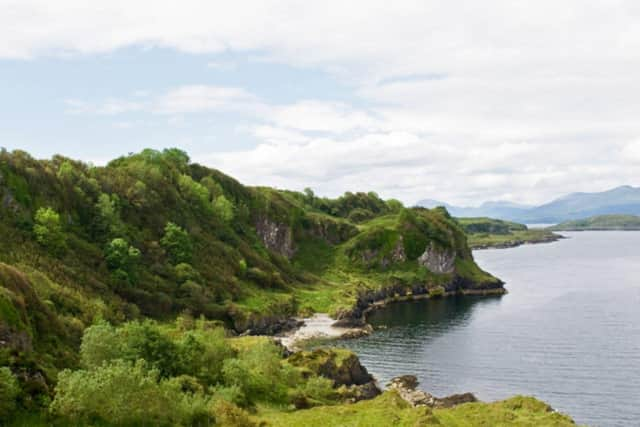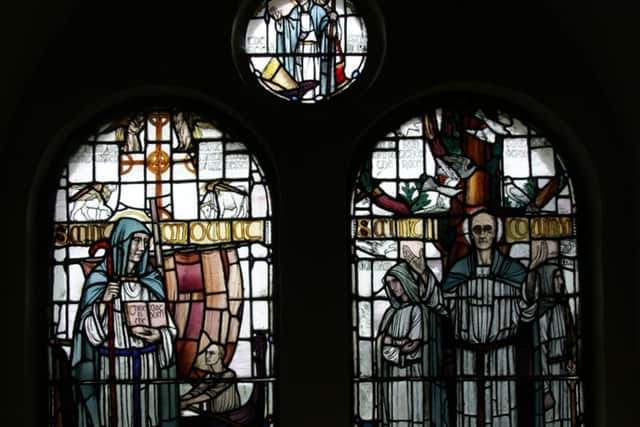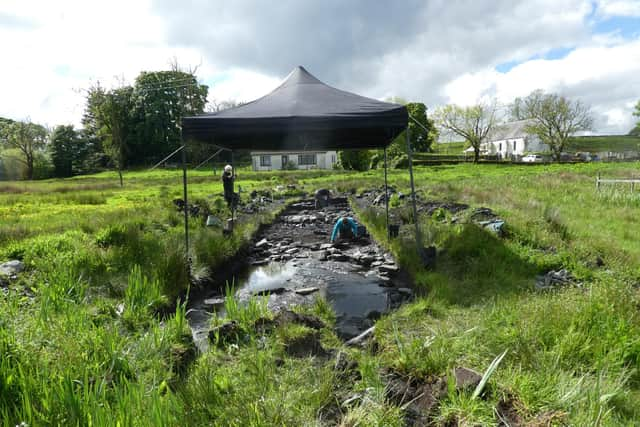Monks, gold and a lost monastery found on Scottish island now 'as important as Iona'
The site of a lost monastery founded by one of the earliest saints to arrive in Scotland has been found on a Scottish island now known to be alive with religion, jewellery making and crafts more than 1,000 years ago.
The monastic site founded by St Moulag, who did much to promote Christianity among the Picts, has been located on the Isle of Lismore near Oban.
Advertisement
Hide AdAdvertisement
Hide AdThe finds include a stone building dating to between the 7th and 10th Century and a workshop where precious metals were used. Nearby, other workers were creating fine carvings in stone, wood, bone and antler.


Lismore Historical Society has announced the discovery following a six-year community archaeology project on the island, which today has a population of around 150.
The society said the “extraordinary” finds confirmed Lismore ranked in importance with other prominent ecclesiastical and monastic early medieval establishments in Scotland such as Iona, Portmahomack, and Inchmartin, with the metal working evidence also showing parallels with secular power centres such as at Dunadd, a royal centre of Dàl Riatan Argyll.
Dr Robert Hay, of the society, said there was a long-standing tradition that St Moluag arrived on Lismore from Ireland around 560AD on a mission to bring Christianity to the Picts, but that questions remained over where he located his monastery.


He added: “It has long been assumed that it was near the later medieval Cathedral of Argyll on Lismore, dedicated to St Moluag in the 13thC, but no visible signs had survived.
“After unsuccessful investigations in various areas, the volunteer team, led by Dr Clare Ellis of Argyll Archaeology, turned their attention to a very unpromising wet rushy field below the parish church (the surviving choir of the cathedral).
“The uncovering of an 8th century burial in 2019 showed that this was the right decision, but the Covid pandemic intervened and field work did not resume until 2022.


"Excavation of structures revealed by geophysics, included the foundations and floor paving of an oval building around 9 metres in diameter. Dating was uncertain and, as well as a range of early medievael finds, Bronze Age arrowheads were also found.
Advertisement
Hide AdAdvertisement
Hide Ad"However, radiocarbon dating has now placed the building in the 7th -10 th century AD, the era of the early monastery.”
It is now known that an area next to the oval building was the focus of high-status and highly skilled metal working, with the fragments of around 120 crucibles found. Analysis by experts at the National Museum of Scotland revealed they were used for melting copper-alloys, silver and gold.
Broken ceramic moulds for making penannular brooches were also recovered. Meanwhile, a search for artefacts from Lismore in the national collection uncovered a rare “touchstone” used to assay the purity of samples of gold.
This fine craft activity is evidence of a sophisticated and influential monastic centre, the society said, with analysis and conservation of 1500 significant finds from the site ongoing.
Moluag was born in the northern part of Ireland around 530AD, making him a contemporary of St Columba. It is said he arrived in Lismore around 562AD before moving up through the west coast and across to the Pictish heartlands in the north and east.